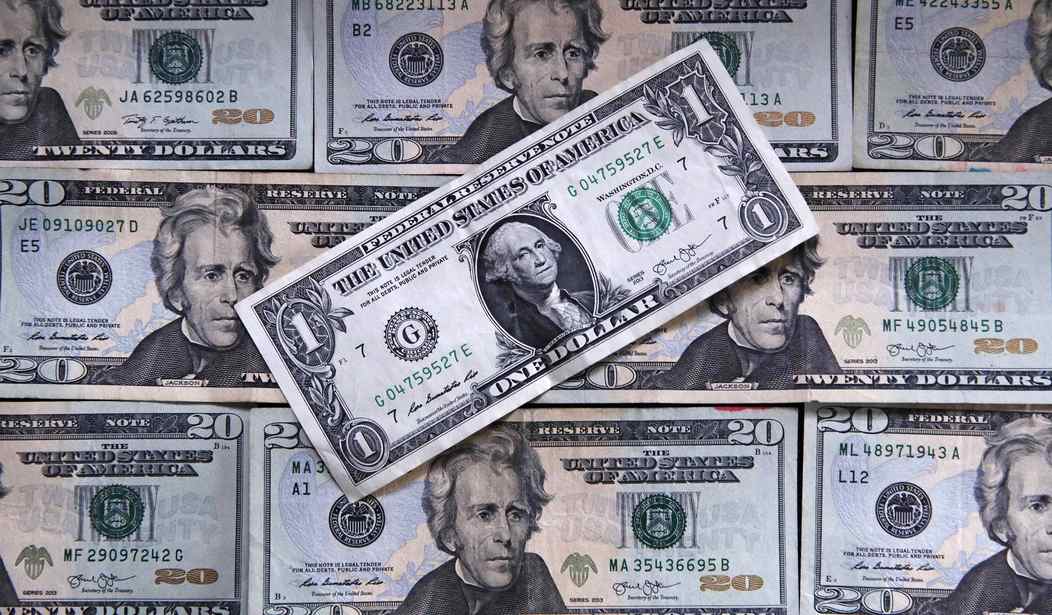Congress is getting ready to attempt to roll out another COVID relief package, this time weighing in at $1.9 trillion. You might wonder whether or not this is justified, given that we’re supposedly “getting back to normal” these days, with most (not all) of the schools back in session and the vast majority of businesses operating again, assuming they can find anyone to hire. If they do manage to pass this next spending bonanza, one thing we might want to ask the swamp creatures is whether or not they plan to do a better job of protecting these assets from the rampant fraud that has plagued the previous editions. Over at the New York Post, employing a bit of gallows humor, Kyle Smith offers a summary of precisely how much of this well-intentioned taxpayer money has found its way into the hands of fraudsters. You might want to ensure you’re sitting down when we reveal that answer, which comes in two parts. First of all, nobody has any idea exactly how much was taken. But one thing we’re pretty sure of is that the total comes in at well more than $100 billion.
If a few billion dollars get carted off by bandits, or chewed into confetti by squirrels, or blown into the nearest river, after a brief chastened look, the Democrats always come back with: “Hey, we think we have a new solution: Spend more money again!” Their latest idea is to upchuck $1.9 trillion (not $2 trillion — they’re not crazy or anything) on yet another COVID relief package.
They’ve already appropriated some $6 trillion in fighting COVID, though. That’s more than we spent fighting WWII, which cost about $4.1 trillion in inflation-adjusted dollars. Unlike in the ’40s, though, we’ve pretty clearly lost World War C. COVID has killed way more people than Hitler and Hirohito did, and unlike the Third Reich, it’s never going to go away. So while we’re getting used to the Forever Virus, we might as well pause for a sec and wonder: What the heck did all that spending buy us?
So far, $100 billion of it has been straight-up stolen, “resulting in the arrest of more than 100 suspects who span the spectrum from individuals to organized groups,” according to a CNBC report. Don’t worry, though, the feds are on the case, and so far they’ve recovered . . . $2.3 billion.
So we’ve managed to arrest a few more than 100 people. And that effort led to the recovery of barely two percent of the minimum amount that we’re confident has gone missing. That’s not the most admirable track record imaginable.
Kyle Smith points us to a new resource that I hadn’t heard of before and you might want to bookmark the page. The law firm of Arnold & Porter has launched a database named the CARES Act Fraud Tracker. It’s searchable across multiple categories and you can check in on where the biggest bits of grifting have been discovered. But as Smith grimly points out, these are only the people that have managed to get caught so far.
Everyone seems to be getting in on the action. Even Baltimore State’s Attorney Marilyn Mosby allegedly had her hand in the cookie jar, using a clause in the CARES Act intended for those who were severely impacted by the pandemic to withdraw retirement money without penalty to purchase vacations homes (plural) in Florida.
But the small amount of penalties she managed to avoid pales in comparison to some of the really ambitious thieves. Some of our regular readers will likely recall Pastor Rudolph Brooks of Washington, who made off with $2.2 million before finally being caught after a binge of purchasing luxury automobiles. Then there was Richard Ayvazyan and Marietta Terabelian of California who snagged a staggering $21 million before disappearing from law enforcement’s radar.
Some people do manage to get caught and go to prison, thankfully. That was the case with Lee Price III of Houston, who vacuumed up a more modest $1.6 million before being ratted out. He’s currently serving 1110 months in prison.
But how many more haven’t been caught and may never be identified? As we learned last year, the sleepy suburb of Markham, Illinois was home to a shocking 1,733 small businesses that received CARES Act relief. That would be a touching story were it not for the inconvenient fact that there are only 311 licensed businesses in all of Markham. Keep in mind that we’re talking about a single town in Illinois with that many likely fraud cases. How many of these incidents took place across the entire country? Do we even have enough federal employees in the entire government and track them all down?
That apparently doesn’t matter in the current era. As Kyle Smith grimly points out, as long as Congress manages to look like they’re doing something (anything) “to help people,” they think that will offer them some measure of protection when they next stand for election. It’s obvious that better fraud protection protocols could be built into these relief acts, but that might cause one person somewhere to have to wait an extra day before getting their check, and then CNN would be running their face on camera on a daily basis. We clearly can’t have that, so they’ll just keep shoveling the money out the door as fast as humanly possible and count up all of the damage later. Welcome to Washington, D.C., folks. Just try not to think about the fact that this is your money as taxpayers that’s being flung around like confetti and pocketed by hucksters to the tune of hundreds of billions of dollars.









